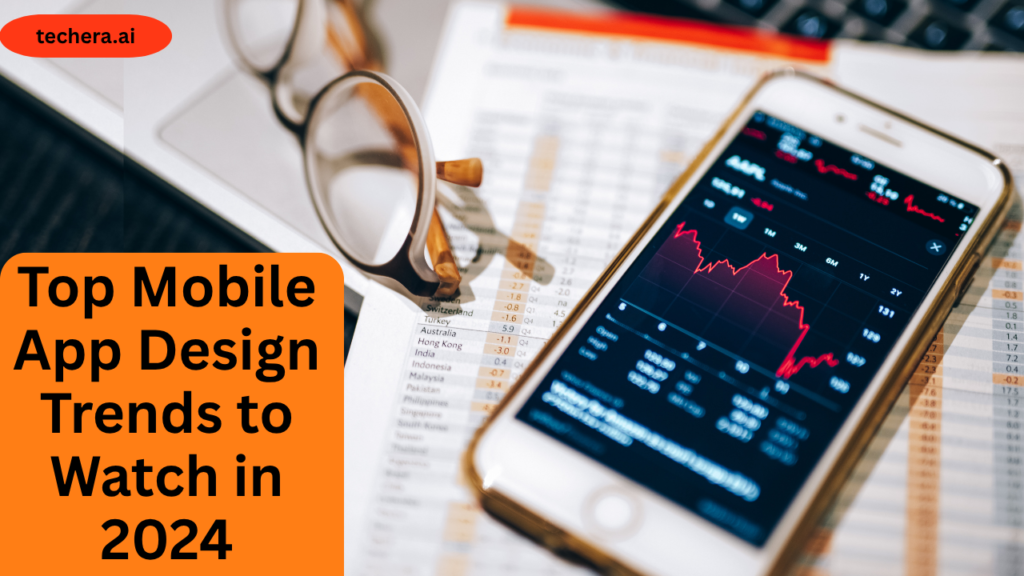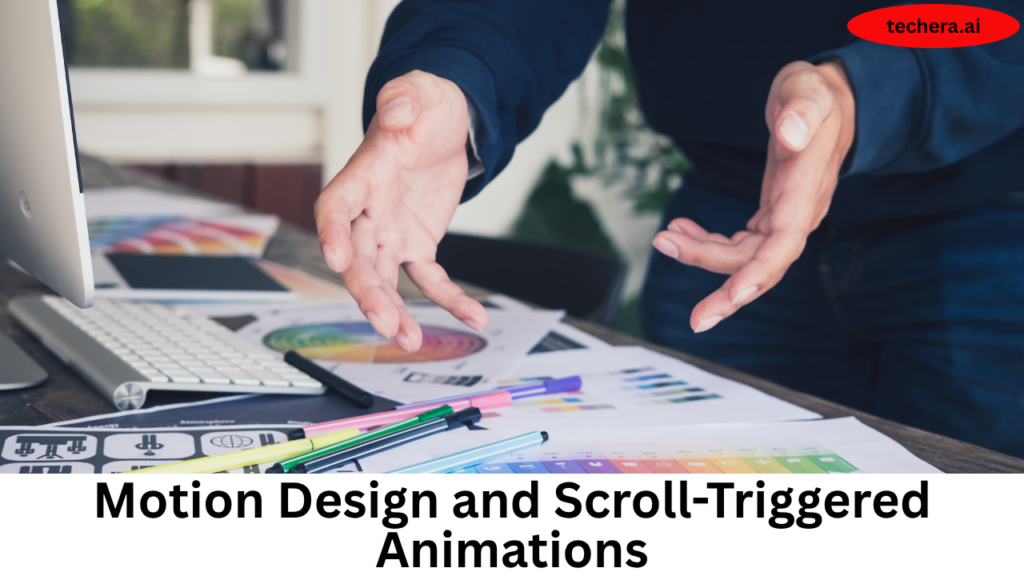
Stay ahead of the curve with our in-depth look at the top Mobile App Design trends to watch in 2024. This blog post explores the emerging styles, technologies, and user experience strategies that are transforming how apps are created and used. From bold visuals and micro-interactions to AI-driven interfaces and accessibility-first design, discover what’s shaping the future of mobile design and how to implement these trends in your next app project.
Introduction
Mobile App Design is more than simply aesthetics; it’s about making programs faster, easier to use, and more emotionally compelling. Keeping up with design trends becomes crucial as customers seek more dynamic and seamless experiences.
The Fast-Evolving Mobile Ecosystem
Smartphones are now smarter than ever, and users are more design-conscious. In 2024, the key is evolving design to meet rising expectations while staying functional, fast, and inclusive.
Emphasis on Minimalism and Clarity
Goodbye Clutter, Hello Focus
Clean interfaces, generous white space, and limited on-screen elements will dominate. The less-is-more strategy aids users in concentrating on important tasks.
Simplified Color Schemes and Typography
Muted palettes, fewer fonts, and bolder text styles are making apps easier on the eyes—and quicker to scan.
Neumorphism is Back—But Smarter
What is Neumorphism?
Delicate shadows are used to blend foreground and backdrop in this soft, organic UI design. Think buttons that look “pressed” into the screen.
How It’s Evolved for Better UX
Designers are mixing neumorphism with flat design for better accessibility, contrast, and responsiveness.
Dark Mode as a Standard, Not a Feature
User Demand and Battery Benefits
Dark mode is now a user expectation rather than merely a fad. It saves battery and reduces eye strain.
Challenges of Designing for Dual Themes
Color balancing and astute asset management are necessary to maintain consistency between light and dark themes.
Microinteractions for Deeper Engagement
Animations That Inform, Not Distract
Microinteractions give apps a sense of life and responsiveness, whether it’s a button that gently bounces or a heart that fills up.
Tactile Feedback and Gesture Cues
Vibration and motion cues guide users without needing words. They feel intuitive—and human.
Voice User Interface (VUI) Integration
Designing Beyond the Screen
Voice-first apps are growing. Designers need to think about voice flows, feedback sounds, and speech accuracy.
Natural Language & Accessibility Benefits
VUI makes apps more accessible to visually impaired users and those with physical limitations.
AI-Powered Personalization
Adaptive Interfaces Based on User Behavior
Apps that adjust based on what users prefer—like custom dashboards or auto-sorting content—are taking center stage.
Predictive UX in Action
From autofill to smart suggestions, AI boosts convenience, retention, and user delight.
Immersive 3D Elements and AR Experiences

3D Icons and Buttons
Depth, shadow, and realism are coming back in subtle ways to make interfaces more tactile.
Augmented Reality Integration in Everyday Apps
AR is not just for games—it’s entering eCommerce, education, and even navigation tools.
Asymmetrical Layouts & Broken Grids
The Rise of Controlled Chaos
Asymmetry adds personality and creativity. When done well, it interrupts monotony and grabs attention.
Balancing Creativity with Usability
Designers must still ensure clarity and navigation despite unpredictable layouts.
Inclusive and Accessible Design
Designing for All Users
Users with hearing, vision, and mobility impairments must be able to use apps. It’s not optional anymore—it’s the new norm.
WCAG Guidelines and Real-Life Application
Meeting Web Content Accessibility Guidelines (WCAG) is essential to ensure equal access.
Also Read : What is Web App Development? How to Build Apps That Deliver a Seamless User Experience
Bottom Navigation and Thumb-Friendly Design
Designing for One-Handed Use
Think about how users hold their phones. Bottom-aligned controls are easier to reach, especially on larger screens.
The Reign of the Reachable Zone
Design within the thumb zone is key—menus, CTA buttons, and tools should live where fingers naturally rest.
Motion Design and Scroll-Triggered Animations

Telling a Story With Movement
Subtle animations help direct attention and make the journey more enjoyable.
Scroll-Based Interactivity That Wows
As users scroll, content morphs, fades, or transforms—turning a static experience into something dynamic.
Modular Design Systems
Reusability Across Platforms
Design systems like Google’s Material or Apple’s Human Interface Guidelines let teams maintain consistency across screens.
Streamlining Cross-Team Collaboration
Design tokens and reusable UI blocks help devs and designers work faster and smarter.
Eco-Friendly UI & Sustainable Design
Energy-Saving Color Palettes
Using darker tones and efficient animations can save battery and lower environmental impact.
Minimalist Code for Lower Processing Power
User devices use less energy when the UI is tidy and the coding is efficient.
Biometrics and Seamless Authentication
Face ID, Fingerprints & Beyond
Users want secure logins—but without typing passwords. Biometric logins are fast, secure, and seamless.
Invisible Security with Visible Convenience
Behind-the-scenes encryption and invisible 2FA make apps safer without annoying users.
Conclusion
Mobile App Design trends are more than aesthetics—they’re about enhancing usability, engagement, and performance. As 2024 unfolds, expect a stronger blend of creativity and user-centricity, with AI, AR, VUI, and dark mode reshaping how users interact with mobile apps. Adopt these trends to stand out as well as to stay current.
Frequently Asked Question
Q. Which trend will have the biggest impact on app design in 2024?
A. AI-powered personalization and voice interfaces will lead the charge, transforming static screens into adaptive experiences.
Q. How can small businesses implement these trends without huge budgets?
A. Pay attention to accessibility, bottom navigation, and minimalist design; these provide a significant impact at a low level of complexity.
Q. Is dark mode necessary for every app?
A. Yes, or at least give users the option. It improves UX and is now expected by default.
Q. Will AR become mainstream in mobile apps?
A. Definitely. As devices become more capable, AR will become a norm in shopping, learning, and even social media.
Q. How do I ensure my app design is accessible?
A. Follow WCAG guidelines, use high contrast, support screen readers, and test with real users.

